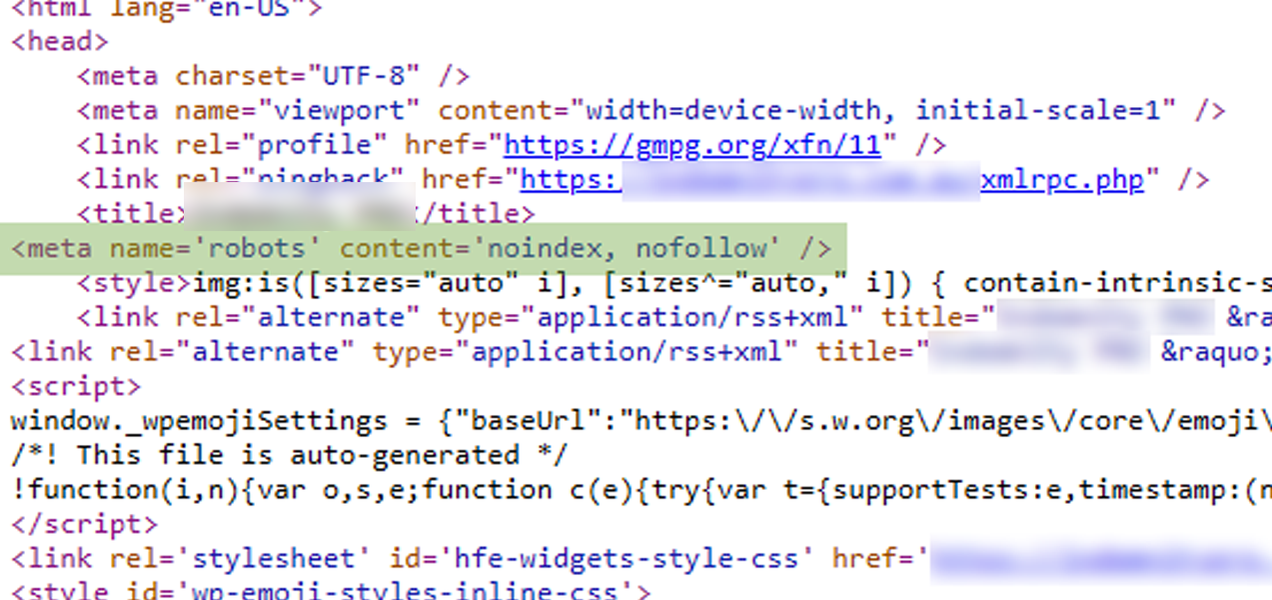The three pillars of SEO and what small business owners actually need to know
Technical foundations, quality content, and strategic link building. The three components that make or break your search engine success.

Tagged as:
If you’re running a small business in Melbourne, you probably get a daily call from the overseas telling you that you “need SEO” for your website. When you ask what that means, you get some scripted waffle about “getting to number one in the Google.” Then sensing you are not an easy mark, they hang up. That’s our experience anyway,
Most SEO explanations are complete rubbish and just pressure sales to get you on the books. What you actually need to know is what SEO involves, why it costs what it does, and whether all this AI stuff is going to make it pointless anyway.
Here’s the thing about SEO that most people don’t know. It’s not one thing. It’s three things working together, and if you skimp on any one of them, the whole thing falls apart and you’re wasting your money.
Whether we’re talking about old school Google search or these new AI search tools that everyone’s using, these three components are what actually make the difference.
I’ve been building websites since the mid 90s, back when we were all excited about 256 colours and dial up internet going from 28.8kbps to 56.6kbps. I’ve seen every SEO fad come and go. Watched Google change its algorithm more times than I can count (this year even). Worked with hundreds of people trying to figure out why their websites aren’t bringing in customers.
The fundamentals haven’t changed, even if the presentation has got a lot better.
Google handles over 5 trillion searches per year now. AI search tools like ChatGPT have exploded to 400 million weekly users1. The landscape looks different, but the foundation is the same. Technical optimisation, content that actually helps people, and other websites linking to yours because you’re worth linking to.
Here’s how the three pillars break down:
| Pillar | What It Covers | Why It Matters | Common Problems |
|---|---|---|---|
| Technical SEO | Website speed, mobile responsiveness, security, structure, schema markup | Foundation for everything else, affects crawling and indexing | Slow loading, mobile issues, broken navigation, no SSL certificate |
| Content | Website copy, blog posts, page content, keyword optimisation, user intent | What people actually read and share, demonstrates expertise | Keyword stuffing, generic content, poor user experience, no local relevance |
| Links | Backlinks from other websites, local citations, media mentions, partnerships | Authority and trust signals, credibility indicators | Buying cheap links, no link building strategy, ignoring local opportunities |
Technical SEO or the boring stuff that actually matters
Think of technical SEO as the plumbing in your house. When it’s working, you don’t think about it. When it’s not working, nothing else matters because you’re standing in sewage.
Technical SEO is everything that makes your website actually function for search engines. And I’ll be honest, most small business websites are a technical disaster. We’ve audited websites that take 50 seconds to load, aren’t actually usable at all on a mobile phone, even two recently that had specific code telling google NOT to include the sites in its results - wtf! This is literally so stupid I thought there must be a legitimate business case for it. It was on two different sites run by the same business.

Your website needs to load fast. Not “pretty fast” or “fast enough”. Actually fast. We’re talking under 2.5 seconds for the main content to appear. Google measures this through something called Core Web Vitals, and if you’re failing these metrics, you’re fighting an uphill battle for everything else.
We’ve seen beautiful websites with amazing content that get zero traffic because they’re slow. Your website might look amazing with its high resolution drone video of skyscrapers intro but guess what? It’s slowing it down. Unless your video is really imparting some great marketing benefit then its probably doing you more harm than good. Tell that to the boss who thinks it’s cool.
Most Melbourne business websites I look at fail the mobile test spectacularly. Over 60% of searches happen on phones now, but somehow we still see websites that look like they were designed in 2005. If your website doesn’t work properly on a mobile phone, you’re essentially telling 60% of your potential customers to go somewhere else. I see so many sites where the drop down menu isn’t clickable, or there’s a helpful virtual assistant covering the thing you need to press. On mobile there is a lot less space to play with and you ‘click’ with fat fingers so the site needs to accommodate this.
Then there’s website structure. Search engines need to understand how your site is organised, which pages exist, and how they relate to each other. This means logical navigation that makes sense, URLs that actually describe what’s on the page, and a sitemap that tells Google where everything is.
Security has become non negotiable. You need an SSL certificate. That’s the little padlock icon you see in browsers. Google explicitly gives preference to secure websites, and honestly, running an insecure website in 2025 is like leaving your front door open on hacker street.
There’s also schema markup, which is probably the most ignored aspect of technical SEO. It’s special code that tells search engines exactly what your content is about. Most people have never heard of it, but it can make a massive difference in how your site appears in search results. It’s like providing Google with a detailed map instead of making them guess what everything means.
The reason most businesses ignore technical SEO is because they don’t know about it. You can point to schema markup and say “look what we did for you.” But nobody really knows what you are on about. But it’s really important, especially now with AI search. Research shows that 25% of AI search answers come from websites that rank number one on Google2.
Want to know what all those top ranking websites have in common? They’ve got their technical foundations sorted.
We build technical SEO into every website from day one at Happypath because we know that trying to fix technical problems later is like trying to repair a foundation after you’ve already built the house on top of it. Plus we’re really good at it.
Content that actually helps people instead of just being promotional
Content is what most people think SEO is all about. Keywords, blog posts, website copy. The stuff people can actually read. But here’s where most businesses get it completely wrong.
They think content optimisation means cramming their target keywords into every sentence until it reads like a robot wrote it. “Welcome to Melbourne Plumbing Services, your number one choice for plumbing services in Melbourne. Our Melbourne plumbers provide quality plumbing services throughout Melbourne…”
It’s painful on the brain to read and Google stopped falling for this nonsense years ago.
Good content optimisation starts with understanding what people are actually looking for. When someone searches “plumber near me” at 11 PM, they’ve got a burst pipe and need help right now. When they search “how to fix a dripping tap,” they want to learn something and maybe try fixing it themselves first.
Your content needs to match what people actually want, not what you think they should want.
Google’s algorithms are sophisticated enough now to understand context and meaning. They know that “plumber,” “plumbing contractor,” and “emergency plumber” are related concepts. They understand that a page about “hot water system repair” is relevant for searches about “broken hot water service.” You don’t need to repeat exact phrases like a broken record.
Here’s where AI search gets interesting. Tools like ChatGPT and Google’s AI Overviews pull information from websites to answer questions. If your content clearly explains concepts and provides comprehensive information, you’re more likely to be cited.
It’s not about gaming the system. It’s about actually being useful.
Google judges content based on what they call E-E-A-T. Expertise, Experience, Authority, and Trust. Do you actually know what you’re talking about? Have you done this work yourself? Do other people recognise your expertise? Can people trust your information?
A strategic content refresh took this website from average to traffic. (Blue line is the number of pages ranking in the top 100 Google results. Orange line is the estimated number of visits).

For small businesses, this should be easy because you’ve likely got real experience and genuine expertise.
As a Melbourne business, you’ve got knowledge that generic content factories can’t replicate. You understand local building codes, seasonal issues with HVAC systems, the quirks of older Melbourne homes, customer preferences that come from actually working in the area. This local expertise is gold for both traditional search and AI responses.
A Melbourne electrician was struggling to compete with big companies for generic terms like “electrician Melbourne.” Then he started creating content about specific issues in older Melbourne homes. Knob and tube wiring, fuse box upgrades, heritage building electrical work.
Suddenly he was the go-to expert for these specialised problems, and his business doubled because he was solving real problems that other electricians wouldn’t touch.
I know a tiler who is now a ‘heritage tiler specialising in Victorian floor tiles’.
The key is demonstrating expertise naturally. Write about the challenges you see customers facing, explain industry changes that affect your clients, share insights from your actual experience. This authentic content builds authority in a way that generic keyword articles never can.
Links or the reputation system that actually works
The third pillar is your incoming links. Other websites linking to yours. Think of these as recommendations. When another website links to yours, they’re telling their readers “this is worth checking out.”
Despite all the predictions that AI would kill link building, backlinks are still super important. They help establish the authority that both traditional search engines and AI systems rely on3. The difference now is that quality matters infinitely more than quantity.
One link from the Melbourne Business Journal is worth more than 500 links from random directory sites. Google evaluates links based on the authority of the linking website, how relevant the content is, the context around the link, and whether the source is trustworthy.
It’s not about collecting as many links as possible. It’s about earning links from sources that actually matter. Quality links known as ‘referring domains’ usually means higher rankings and more visitors ‘organic traffic’. This is a local plumber who is ranking with nearly 3000 keywords.

Local businesses have opportunities for quality links that most never take advantage of. When you sponsor the local footy club and they mention you on their website, that’s a quality local link. When you get quoted in an Age article about industry trends, that’s a high authority link. When you partner with complementary businesses and naturally reference each other, those are relevant links.
The best links come from being genuinely useful and building real relationships. I’ve seen electricians get links from renovation blogs by providing expert advice on electrical planning. Accountants get links from business publications by offering insights on tax changes. Plumbers get links from home improvement sites by explaining how to prevent winter pipe problems.
Our SEO approach focuses on earning links through relationship building and valuable content creation, not buying dodgy links from “SEO companies” who promise 1000 backlinks for $500. We’ve seen too many businesses get penalties because they took shortcuts with link building. Yes, we end up buying these links because whatever anyone says link building is a business. But we buy the right links in reputable sites related to your industry, not just generic blog spam.
Building authority takes time, but once you’ve established your website as a trusted source, both search engines and AI systems are more likely to reference your content. It becomes a positive cycle where authority leads to visibility, which leads to more opportunities to build authority.
How AI changes the game without killing SEO
Everyone’s panicking about AI killing SEO. Every few months someone declares “SEO is dead” because of some new technology. I remember when social media was going to kill SEO, then mobile apps, then voice search, and now AI.
SEO has survived them all because the fundamental need hasn’t changed. People need to find information, and businesses need to be found.
AI is definitely changing how people search. Google’s AI Overviews now appear in about 13% of searches, up from 6% in January4. ChatGPT has become one of the most visited websites globally. People are asking longer, more conversational questions instead of typing keywords.
But here’s what actually matters. AI search tools still get their information from websites that rank well in traditional search. The same three pillars that work for Google also work for AI visibility. The foundation hasn’t changed, even if the presentation looks different.
If anything, AI has raised the bar for content quality. AI systems are better at detecting keyword stuffed rubbish than traditional search engines. They prioritise comprehensive, well structured information that actually answers questions. Technical SEO still matters because AI needs to access and understand your content. Authority signals are still crucial because AI systems need to decide which sources to trust.
The real change is in search behaviour. Instead of “Melbourne electrician,” people might ask “Why does my power keep tripping when I use the heater?” This shift benefits businesses that create comprehensive, helpful content answering real questions.
Businesses thriving with AI search are the ones that were already doing SEO properly. They have solid technical foundations, helpful content, and established authority. AI hasn’t killed SEO. It’s just made good SEO more important and bad SEO more obvious.
Why SEO costs what it actually costs
This is probably the most common question I get. Why does SEO cost so bloody much? Quality SEO for small businesses in Australia runs between $1,200 and $3,500 per month5. I know that sounds like a lot, but there are real reasons for these costs.
Technical SEO requires actual expertise. Auditing and optimising a website properly isn’t something you learn from a YouTube tutorial. It requires understanding how search engines work, what affects performance, and how to implement changes without breaking everything. I’ve been doing this for over 25 years and I’m still learning new things and having to keep up daily with new developments.
Content creation takes real time. A comprehensive article that serves users and search engines can take 20+ hours when you factor in research, writing, editing, and optimisation. That’s assuming the writer actually knows the industry well enough to create something valuable, not just generic content factory garbage. Yes, AI LLM’s can help but you still need to put the time in to develop prompts that give you decent output rather than generic slop. Content writers are highly experienced professionals and if you use them, they will add to your budget enormously, but also to your credibility.
Link building is relationship building, and relationships take time. You can’t just email someone and ask for a link unless you have a pretty solid relationship. As I already mentioned it’s a business and when I can sell a link on my website for $500 why would I give you one? Bottom line is with SEO most of your budget is going on buying links.
There’s also the compound effect. SEO work in month three supports results you see in month eight. Unlike paid advertising where you stop getting traffic the moment you stop paying, SEO benefits build over time. This is why SEO delivers better long term ROI6, but it means the initial investment feels high compared to immediate results.
Here’s what you actually get at different price points:
| Monthly Investment | What’s Included | What’s Missing | Typical Results |
|---|---|---|---|
| Under $800 | Automated tools, basic reporting, generic content | Human expertise, custom strategy, quality links | Poor results, potential penalties |
| $1,200 - $2,000 | Basic technical fixes, some content, limited link building | Advanced strategy, comprehensive coverage | Slow but steady progress |
| $2,000 - $3,500 | Full technical audit, quality content, strategic link building | Enterprise level tools and reporting | Strong growth and ROI |
| $3,500+ | Comprehensive strategy, dedicated team, advanced tools | Nothing, this is full service | Excellent results and market dominance |
SEO services under $800 per month usually involve automated tools instead of human expertise, content created by people who don’t understand your industry, cheaply bought links that can actually harm your rankings, or cookie cutter strategies that ignore your specific market.
It’s like hiring a tradie. You can always find someone cheaper, but there’s usually a good reason they’re cheaper. The question isn’t whether you can find cheaper SEO, it’s whether you can afford the consequences of cheap SEO.
Timeline and when you’ll actually see results
Another frustrating aspect of SEO is the timeline. Most business owners want to see results immediately, which is completely understandable but not how SEO works.
The first three months are mostly foundation work. Technical audits, strategy development, and implementing improvements. You might not see dramatic changes in rankings, but crucial groundwork is being done. It’s like renovating a house. You have to fix the foundation before you can see the beautifully finished rooms.
Between months four and six, you’ll start seeing real improvements. Website traffic increases, rankings improve for less competitive terms, and user engagement gets better. This is where you begin to see that the investment is working, even if you’re not dominating the most competitive keywords yet.
Months six to twelve is where SEO investment typically pays off properly. Rankings for competitive keywords, substantial traffic increases, actual lead generation improvement, and clear revenue impact. Research shows SEO ROI usually becomes positive within 6 to 12 months7.
Here’s what realistic SEO progress looks like:
| Timeline | Focus Area | What You’ll See | What’s Happening Behind the Scenes |
|---|---|---|---|
| Months 1-3 | Foundation building | Minimal ranking changes, maybe small traffic increases | Technical fixes, strategy development, content planning |
| Months 4-6 | Early movement | 20-40% traffic increase, rankings for easier keywords | Content publishing, initial link building, authority building |
| Months 6-12 | Real results | 100-300% traffic increase, competitive keyword rankings | Compound effects, established authority, consistent lead flow |
| Year 2+ | Market dominance | Sustained growth, industry recognition, referral traffic | Strong market position, natural link earning, brand authority |
Search engines need time to discover your improvements, evaluate content quality, assess the authority of your backlinks, and compare your site against competitors. This process can’t be rushed without risking penalties or poor results.
Anyone promising first page rankings in 30 days is either lying or using tactics that will hurt you long term.
Businesses that succeed with SEO understand it’s a marathon, not a sprint. They make consistent investments over time and measure success based on business results, not just rankings.
Return on investment and making the numbers work
SEO leads have a 14.6% close rate compared to 1.7% for cold calling and other outbound marketing8. SEO traffic continues flowing after you stop paying, organic search delivers 8x better ROI than PPC advertising, and most marketers confirm SEO generates more sales than paid ads.
To work out if SEO makes sense for your business, consider your customer lifetime value, what percentage of website visitors become customers, and how much additional traffic would impact your business. If your average customer is worth $5,000 and you convert 3% of website visitors, every 100 additional monthly visitors could generate $15,000 in new revenue.
Unlike paid advertising, SEO benefits compound over time. Content you create and links you earn continue working years after the initial investment. I’ve seen established websites generate tens of thousands in leads monthly from SEO work done years earlier.
The key is viewing SEO as an investment in your digital foundation rather than an expense. Every piece of content, every technical improvement, every quality link becomes an asset producing value over time.
Working with AI tools instead of fighting them
AI is creating opportunities for businesses that know how to use it properly. AI can help with keyword research, technical audits, content optimisation, competitor analysis, and performance tracking. These tools make SEO more efficient for businesses that understand how to use them.
But AI can’t replace unique industry knowledge, local market understanding, relationship building, strategic thinking, or quality control. It can simulate it and replicate it for sure, but genuine original thought still needs a human brain. The most effective approach combines AI tools with human expertise and local knowledge.
We’re using AI to handle routine SEO tasks while focusing human effort on strategy, relationship building, and creating genuinely valuable content. It’s not AI replacing humans. It’s using both effectively.
Common SEO mistakes businesses make
The biggest mistake is focusing on only one pillar instead of all three working together. Many businesses invest in content while ignoring technical problems or link building. Others expect immediate results and quit after a few months, missing the compounding benefits that make SEO valuable.
Choosing SEO providers based only on price usually backfires. The cheapest option often costs more long term due to poor results, wasted time, and sometimes penalties. Melbourne businesses also miss local opportunities like media coverage, business networks, and community involvement that provide natural link opportunities.
Another common mistake is tracking only rankings instead of business metrics like traffic, leads, and revenue. Rankings are nice, but they don’t pay the bills. You should focus on what actually matters for your business.
Making SEO work for your business
For very small businesses with limited budgets, basic SEO can be learned and implemented internally. This includes technical optimisations, content creation, and local SEO management including Google Business Profile optimisation.
Consider professional SEO when your market is competitive, you need results faster than DIY allows, technical issues require expertise, you want to focus on running your business instead of learning SEO, or revenue potential justifies the investment.
Quality SEO providers should explain their approach clearly without jargon, provide realistic timelines, focus on business results rather than vanity metrics, offer transparent reporting, and have relevant experience with businesses like yours.
At Happypath, we specialise in SEO for Melbourne small businesses because we understand the local market and work with businesses that value long term, sustainable growth. We know every business dominating search results started with the same three pillars. The difference is execution, consistency, and understanding how these components work together.
The three pillars of SEO remain the foundation of search success, whether you’re dealing with traditional Google search or AI powered tools. Understanding these pillars helps you make informed decisions about SEO investment, set realistic expectations, and choose the right approach for your business.
Want to find out how the three pillars could work for your Melbourne business? Book a free discovery call and we’ll explain exactly what’s involved, what you can expect, and how to make SEO work for your business without the jargon or unrealistic promises. You don’t need to have your website with us to benefit from our SEO services but if you do you will already have a head start on technical and content SEO.
The extra bit
What's the biggest SEO mistake Melbourne businesses make when they start getting some success?
How do small businesses know if their SEO agency is actually doing good work or just taking their money?
Should small businesses worry about their competitors' SEO strategies, and how much should you spy on them?
What role does website design play in SEO success, and should small businesses redesign their sites for better SEO?
How important are online reviews for SEO, and what's the best way to get them without being pushy?
References
Footnotes
-
Search Engine Land, “How AI is reshaping SEO: Challenges, opportunities, and brand strategies for 2025” ↩
-
Search Engine Journal, “Is SEO Still Relevant In The AI Era? New Research Says Yes” ↩
-
PageTraffic, “The Three Pillars of SEO - Technical, Content & Off-Page” ↩
-
Semrush, “AI Overviews Study: What 2025 SEO Data Tells Us About Google’s Search Shift” ↩
-
Safari Digital, “How Much Does SEO Cost in Australia? [Updated for 2025]” ↩






